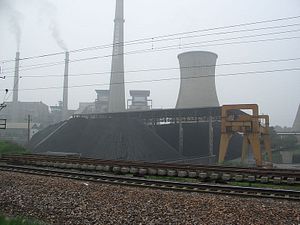When the global leadership and elite met at Davos World Forum in January, climate change was still firmly top of the agenda for 2020, in response to the surge of global campaigns and alarm in 2019. The time was ripe for the EU and China to “demonstrate global leadership” in combating climate change as they had jointly declared back in July 2018.
At the Leipzig EU-China Summit in September 2020, the two could have striven to display their common line for the COP26 Summit in Glasgow in November. However, the scheduled meetings have been put on hold and put climate agendas in jeopardy as the world is coming to grips with COVID-19. The test of EU’s commitment is to ensure that the ball is not dropped on climate at a time when eyes are fixed on the pandemic and its economic consequences — especially by its climate partner-to-be, China, which has latched onto coal in the effort to boost its economy,
In the short term, COVID-19 has granted a temporary respite to global CO2 emissions as measures to stall the pandemic have pulled on the brakes of the world economy. In China, coal consumption for February was down 36 percent and C02 emissions dropped 200 million tons. However, the temporary fall is well on its way to be undone by the coal guzzling stimulus that has followed. According to a recent report by Global Energy Monitor, China allowed more permits for new coal plants this February and March than it had in the same period last year and more permits are on the horizon.
It should be noted that COVID-19 appears to have only accelerated a trend that started back in late 2019. As the Chinese economy was facing increasing turbulence from the U.S.-China trade war and other factors, the government had begun back-tracking on vows made in 2017 to kick its coal habit to improve air quality and combat climate change.
Moreover, while China had been slowing down the deployment of new coal projects domestically, it had simultaneously become the largest backer of coal power projects globally through its Belt and Road Initiative (BRI). Since 2013, Chinese finance has backed coal projects in 153 countries. There are currently 60 new coal plants – or 72 percent of all coal plants being built outside China – in the pipeline backed exclusively by Chinese finance. The projects have a planned capacity of 70.3 gigawatts and will produce 276 mega tonnes of carbon emissions a year, the equivalent of the national emissions of Spain.
Both the domestic backtracking and the ongoing global bank-rolling of coal should be the focus of the EU’s climate diplomacy with China. Initiating an international accord to divest from coal would be an immensely impactful measure – and more plausible than it could first seem, considering China’s lingering appetite for more coal.
The domestic economic case for China to not invest in coal is only stronger than it was in 2017. For one, China’s existing coal plants currently run vastly under capacity. The excess capacity is a legacy of the state-led overinvestment that followed the 12th Five Year Plan (FYP) in 2010, which put the onus of economic stimulus after the global financial crash on coal, and the 2014 decision to allow the opportunistic provinces approve their own coal plant projects.
The under-use of coal plants and the price pressure from ever-more competitive solar and wind power have reduced the profit margins for coal plants to a minimum – leading to 40 percent of coal plants operating at a loss and to the first bankruptcies ever in the Chinese coal sector in 2019. The markets would not produce or demand more plants and the recent coal-led stimulus appears more like old instinct than prudent state planning.
China’s commitment to coal projects abroad could also be wavering. Not only is the economic feasibility increasingly questioned, but 11 of the current BRI coal projects are stuck at local level due to environmental concerns, such as the Kenu Coal Plant project in Kenya, which was put on indefinite hold in June 2019. The Chinese government already appeared to heed the change in wind at the BRI Forum in April 2019, when it introduced the (voluntary) “Green Investment Principles for the Belt and Road Development” and other green initiatives to incorporate a more low-carbon approach into BRI projects. While 38 of the planned 60 coal projects are too far into development to be feasibly cancelled, as many as 22 projects in total are still awaiting approval. As the economic strain from COVID-19 diverts resources from BRI, a case could be made for China to match its new BRI rhetoric, and the very least pull the plug on increasingly volatile coal ventures abroad.
As the Chinese leadership mulls near-term COVID-19 stimulus measures as well as the 14th FYP for 2020-2025, the EU should throw its weight behind a diplomatic appeal to sway the odds against coal. It could be emphasized that not only does China have a chance to entrench its global lead in production of renewable energy (for which the EU removed its tariff barriers in 2018), but it has a long-desired golden opportunity to “demonstrate global leadership.” Acting together with the EU when the most of the world is in tumult, China can assert itself as a responsible and cooperative global power. A joint accord, open to other states, to end investment into coal would be a powerful and concrete message and a credibility boost for climate negotiations to come – with little to no costs and perhaps the added benefit of clearer Chinese skies for Beijing Winter Olympics in 2022 attached.
Antti Tulonen is a research fellow at the EU-Asia Centre, a Brussels based think tank.

































